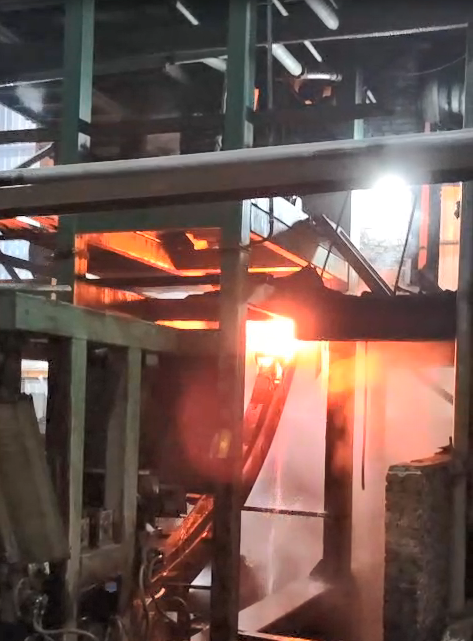Traveling wave induction heating
Traveling Wave Induction Heating: Principles, Applications, and Advantages
Introduction
When it comes to high-power induction heating applications, the use of single-phase induction coils often proves insufficient. For larger loads and better power balance, three-phase power supplies are typically applied. Although these setups do not represent a “true” three-phase system, they allow engineers to achieve higher efficiency in industrial induction heating systems.
However, conventional multi-layer induction coils face challenges. The outer layers of the coil naturally heat the inner layers, leading to reduced power factor due to the increased air gap between the outer coil and the workpiece. While external flux-guiding techniques exist, they cannot effectively eliminate this limitation.
To overcome these drawbacks, researchers at Aston University, Birmingham, have been developing an innovative solution: traveling wave induction heating. This emerging method promises to revolutionize the field and expand applications across multiple industries.

The Principle Behind Traveling Wave Induction Heating
The concept is best understood by drawing parallels with a traditional three-phase induction motor:
-
In a standard motor, windings are distributed in multiple slots.
-
When connected to a three-phase power source, these windings generate a sinusoidally distributed magnetic motive force (MMF) that rotates at a certain synchronous speed.
-
The synchronous speed n is given by the formula:
Where:
-
n = rotational speed (revolutions per second)
-
f = supply frequency (Hz)
-
p = number of pole pairs
In a motor, if there is a slip (speed difference) between the rotating magnetic field and the rotor, energy is dissipated within the rotor, reducing efficiency.
In traveling wave induction heating, this same energy loss is not seen as a drawback—it is the very mechanism used to heat the workpiece. By fixing a metallic rotor (or substituting it with the target workpiece), the energy dissipation translates directly into heat generation, enabling effective thermal processing.
Applications of Traveling Wave Induction Heating
Traveling wave induction heating has already found applications in:
-
Cylindrical configurations → such as container heating and billet preheating.
-
Planar configurations → similar to linear motors, adapted for flat workpieces and surfaces.
Its flexibility allows engineers to tailor the system for different geometries, making it highly versatile compared to conventional induction heating methods.
Advantages Over Traditional Induction Heating
Compared to single-phase and conventional multi-layer induction coils, traveling wave induction heating offers distinct benefits:
| Feature | Traditional Induction Heating | Traveling Wave Induction Heating |
|---|---|---|
| Efficiency | Reduced due to air gap effects | Higher efficiency, less power loss |
| Heating Uniformity | Inner coil layers heated by outer layers | More balanced and direct heating |
| Design Flexibility | Primarily cylindrical | Supports both cylindrical and planar |
| Scalability | Limited for high-power applications | Suitable for high-power, large-scale heating |
Why This Matters for Modern Industry
As industries push toward energy efficiency, precision, and scalability, traveling wave induction heating presents a clear technological advantage. It ensures:
-
Reduced energy waste
-
Improved heating uniformity
-
Broader application potential
This makes it especially valuable for fields like metallurgy, container manufacturing, and advanced material processing.
Conclusion
Traveling wave induction heating is more than an academic concept—it’s a practical innovation ready to transform how industries approach high-power thermal processing. By turning what was once seen as wasted energy into a controllable heating method, this technology offers a sustainable, efficient, and scalable path forward.
For businesses seeking next-generation heating solutions, this is not just another option—it’s the future of induction heating.

